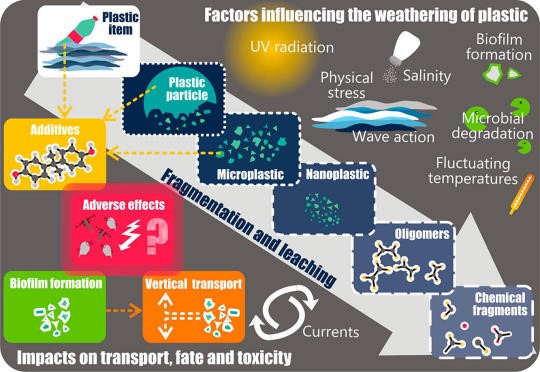Once plastic waste finds its way into the marine environment, various weathering processes lead to the generation of microplastic, release of chemical additives, and likely also production of nanoplastic and chemical fragments cleaved from the polymer backbone. However, weathering of plastic in the marine environment is not well understood in terms of time scales for fragmentation and degradation, the evolution of particle morphology and properties, and hazards of the chemical mixture liberated by weathering. Biofilms that form and grow on plastic affect weathering, vertical transport, toxicity, and uptake of plastic by marine organisms and have been underinvestigated. In a recent paper in Environmental Science & Technology Letters we discuss the need to close the knowledge gaps associated with the weathering processes of plastic degradation, in order to reduce the uncertainty in hazard and risk assessment of microplastic pollution. The paper presents the main goals of the JPI-Oceans funded research project WEATHER-MIC.
Reference: Jahnke, A., Arp, H. P. H., Escher, B. I., Gewert, B., Gorokhova E., Kühnel D., Ogonowski M., Potthoff A., Rummel C., Scmitt-Jansen M., Toorman E., MacLeod M. 2017: Reducing uncertainty and confronting ignorance about the possible impacts of weathering plastic in the marine environment. Environ Sci Technol. DOI: 10.1021/acs.estlett.7b00008.

Illustration: Annika Jahnke, Helmholtz Centre for Environmental Research –UFZ, Leipzig, Germany (Jahnke et al. 2017. Environ. Sci. Technol. Lett. DOI: 10.1021/acs.estlett.7b00008)